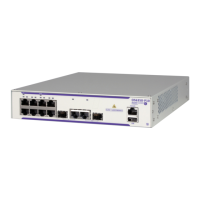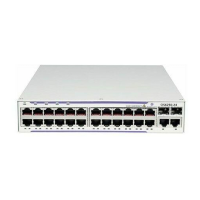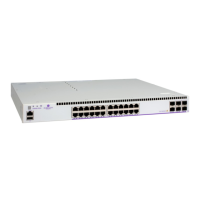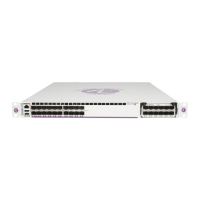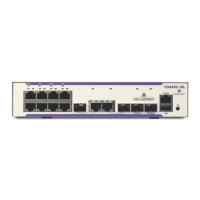Configuring IP IP Configuration
OmniSwitch AOS Release 8 Network Configuration Guide December 2017 page 15-20
Configuring the Route Preference of a Router
By default, the route preference of a router is in this order: local, static, OSPF, RIP, EBGP, and IBGP
(highest to lowest).
Use the ip route-pref command to change the route preference value of a router. For example, to
configure the route preference of an OSPF route, you must enter:
-> ip route-pref ospf 15
To display the current route preference configuration, use the show ip route-pref command:
-> show ip route-pref
Protocol Route Preference Value
------------+------------------------
Local 1
Static 2
OSPF 110
RIP 120
EBGP 190
IBGP 200
Configuring the Time-to-Live (TTL) Value
The TTL value is the default value inserted into the TTL field of the IP header of datagrams originating
from the switch whenever a TTL value is not supplied by the transport layer protocol. The value is
measured in hops.
Use the ip default-ttl command to set the TTL value. Enter the command, followed by the TTL value. For
example, to set a TTL value of 75, you would enter:
-> ip default-ttl 75
The default hop count is 64. The valid range is 1 to 255. Use the show ip config command to display the
default TTL value.
Configuring Route Map Redistribution
You can learn and advertise IPv4 routes between different protocols. Such a process is referred to as route
redistribution and is configured using the ip redist command.
Redistribution uses route maps to control how external routes are learned and distributed. A route map
consists of one or more user-defined statements that can determine which routes are allowed or denied
access to the receiving network. In addition, a route map can also contain statements that modify route
parameters before they are redistributed.
When a route map is created, a name is given to identify the group of statements that it represents. This
name is required by the ip redist command. Therefore, configuring route redistribution involves the
following steps:
1 Create a route map, as described in “Using Route Maps” on page 15-21.
2 Configure redistribution to apply a route map, as described in “Configuring Route Map Redistribution”
on page 15-24.

